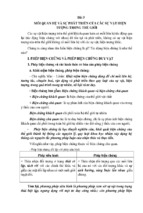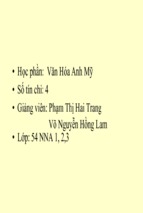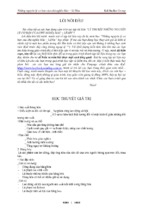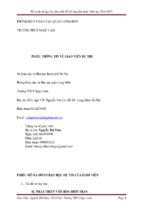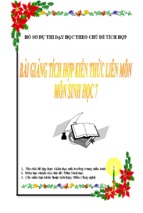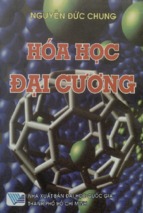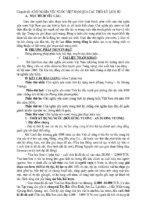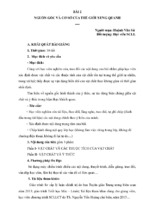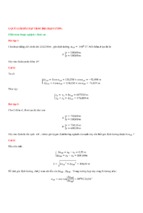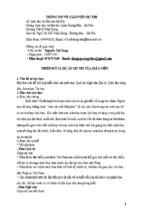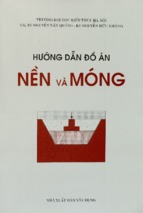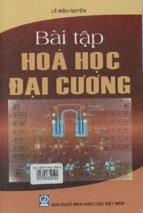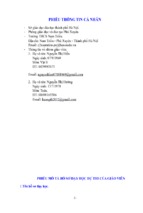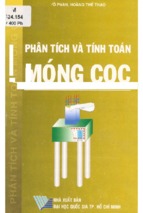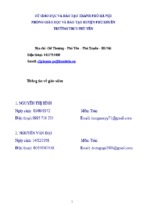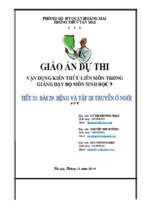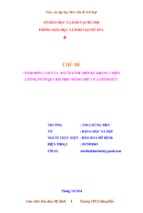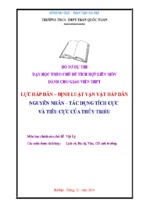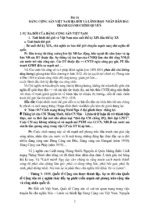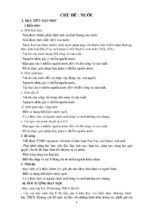Downloaded from ascelibrary.org by RMIT UNIVERSITY LIBRARY on 01/03/19. Copyright ASCE. For personal use only; all rights reserved.
International
Conference on
Transportation and
Development 2018
Connected and
Autonomous Vehicles and
Transportation Safety
Edited by
Papers from Sessions of the
International Conference
on Transportation and
Development 2018
Pittsburgh, Pennsylvania
July 15–18, 2018
Yinhai Wang, Ph.D.
Michael T. McNerney, Ph.D., P.E.
Downloaded from ascelibrary.org by RMIT UNIVERSITY LIBRARY on 01/03/19. Copyright ASCE. For personal use only; all rights reserved.
INTERNATIONAL CONFERENCE ON
TRANSPORTATION AND DEVELOPMENT
2018
CONNECTED AND AUTONOMOUS VEHICLES
AND TRANSPORTATION SAFETY
SELECTED PAPERS FROM THE INTERNATIONAL CONFERENCE ON
TRANSPORTATION AND DEVELOPMENT 2018
July 15–18, 2018
Pittsburgh, Pennsylvania
SPONSORED BY
The Transportation & Development Institute
of the American Society of Civil Engineers
EDITED BY
Yinhai Wang, Ph.D.
Michael T. McNerney, Ph.D., P.E.
Published by the American Society of Civil Engineers
Downloaded from ascelibrary.org by RMIT UNIVERSITY LIBRARY on 01/03/19. Copyright ASCE. For personal use only; all rights reserved.
Published by American Society of Civil Engineers
1801 Alexander Bell Drive
Reston, Virginia, 20191-4382
www.asce.org/publications | ascelibrary.org
Any statements expressed in these materials are those of the individual authors and do not
necessarily represent the views of ASCE, which takes no responsibility for any statement
made herein. No reference made in this publication to any specific method, product, process,
or service constitutes or implies an endorsement, recommendation, or warranty thereof by
ASCE. The materials are for general information only and do not represent a standard of
ASCE, nor are they intended as a reference in purchase specifications, contracts, regulations,
statutes, or any other legal document. ASCE makes no representation or warranty of any
kind, whether express or implied, concerning the accuracy, completeness, suitability, or
utility of any information, apparatus, product, or process discussed in this publication, and
assumes no liability therefor. The information contained in these materials should not be used
without first securing competent advice with respect to its suitability for any general or
specific application. Anyone utilizing such information assumes all liability arising from such
use, including but not limited to infringement of any patent or patents.
ASCE and American Society of Civil Engineers—Registered in U.S. Patent and Trademark
Office.
Photocopies and permissions. Permission to photocopy or reproduce material from ASCE
publications can be requested by sending an e-mail to
[email protected] or by locating a
title in ASCE's Civil Engineering Database (http://cedb.asce.org) or ASCE Library
(http://ascelibrary.org) and using the “Permissions” link.
Errata: Errata, if any, can be found at https://doi.org/10.1061/9780784481530
Copyright © 2018 by the American Society of Civil Engineers.
All Rights Reserved.
ISBN 978-0-7844-8153-0 (PDF)
Manufactured in the United States of America.
International Conference on Transportation and Development 2018
Preface
Downloaded from ascelibrary.org by RMIT UNIVERSITY LIBRARY on 01/03/19. Copyright ASCE. For personal use only; all rights reserved.
It is our great pleasure to welcome you to the ASCE International Conference on Transportation
and Development (ICTD 2018)! Organized by Transportation and Development Institute
(T&DI), ICTD is ASCE’s flagship conference in transportation and development. The
conference theme, Emerging Technologies: Impacts on Transportation and Development,
represents our vision and goal for future endeavors in transportation and development research,
education, and practice. ASCE ICTD 2018 awaits your active participation and contribution at
the beautiful and scenic Wyndham Grand Pittsburgh Downtown Hotel from July 15 through 18,
2018.
Pittsburgh is historically known as “the Steel City.” Now, about 1,600 technology firms,
including Google, Apple, Bosch, Facebook, Uber, Nokia, Autodesk, and IBM, have landed in
Pittsburgh, making it an important technology hub and one of the eleven most livable cities in
the World. Being the host city of ASCE ICTD 2018, Pittsburgh offers many unique real-world
examples for transportation and development professionals to feel, think, and learn.
ASCE ICTD 2018’s technical program is featured with four plenary sessions:
Opening Plenary Session: Keynote Speeches from Federal, State, and Local Government
Leaders.
Private Sector CEO Forum: Impacts of Connected & Autonomous Vehicles on
Transportation & Development - Perspectives of Leaders from the Private Sector
State DOT CEO Forum: Impacts of Connected & Autonomous Vehicles on
Transportation & Development - Perspectives of Leaders from the Public Sector.
The Advent of CAVs - A Global Perspective: Current Status of Deployment and Future
of Connected and Autonomous Vehicles Around the World.
The program covers deeper technical content on multiple modes and topics in transportation and
development in eight (8) concurrent tracks. It also includes a variety of special events such as
the T&DI Board of Directors’ Town Hall Meeting, Younger Members’ “The Best Advice I Ever
Received” session, icebreaker reception, and an Awards Banquet. The conference is preceded
with four (4) associated workshops:
Mobility as a Service Workshop
University Transportation Center Technology Transfer Workshop
NSF Civil Infrastructure Systems Workshop
ASCE Ethics Workshop.
All these workshops are carefully designed to enhance fruitful experience of participants. Last
but not the least, conference attendees get the opportunity to attend over 15 technical committee
meetings of ASCE as preconference event, covering all areas of transportation and development.
In addition, partnering with Transportation Research Board (TRB), two TRB committees have
chosen to host their mid-year meeting at ICTD 2018, giving conference attendees additional
exposure to technical discussions and content.
© ASCE
iii
International Conference on Transportation and Development 2018
It is exciting to announce that ASCE ICTD 2018 attracted huge interests as indicated by the
record high quality contributions and the rich technical program. A total of 146 papers were
accepted for publication in the proceedings. These published papers went through a rigorous
review and quality assurance process in the process of becoming a publication of ASCE – the
world’s largest publisher of Civil Engineering content. The proceedings for this conference have
been organized in four (4) different volumes based on the topical distribution as follows:
Downloaded from ascelibrary.org by RMIT UNIVERSITY LIBRARY on 01/03/19. Copyright ASCE. For personal use only; all rights reserved.
Volume I: Connected & Autonomous Vehicles and Transportation Safety
Volume II: Traffic & Freight Operations and Rail & Public Transit
Volume III: Airfield & Highway Pavements
Volume IV: Planning, Sustainability, and Infrastructure Systems
All these accomplishments are due to the excellent team efforts of our Conference Steering
Committee, and the terrific support from ASCE-T&DI staff. We would like to express our
sincere gratitude to all the authors and conference participants for their solid contributions. We
are also grateful to all paper reviewers for their outstanding volunteer efforts. Finally, our special
thanks goes to the entire Conference Steering Committee, Local Organizing Committee, T&DI
technical committee volunteers, ASCE-T&DI staff members, sponsors, exhibitors, invited
speakers, and session chairs for their hard work and great efforts to help lead ASCE ICTD 2018
on track to a great success!
ASCE ICTD has been an excellent platform for information exchange, experience sharing, and
professional networking since it was launched in 2011. We hope ASCE ICTD 2018 to be another
wonderful and rewarding experience in your memory. Wish you a very pleasant stay in
Pittsburgh!
ASCE ICTD 2018 Co-Chairs & Proceedings Editors
Yinhai Wang, Ph.D., M.ASCE
University of Washington
© ASCE
Michael T. McNerney, Ph.D., P.E., M.ASCE
University of Texas at Arlington
iv
International Conference on Transportation and Development 2018
Acknowledgements
Conference Steering Committee
Downloaded from ascelibrary.org by RMIT UNIVERSITY LIBRARY on 01/03/19. Copyright ASCE. For personal use only; all rights reserved.
Yinhai Wang, Ph.D., M.ASCE (Co-Chair & Proceedings Editor)
University of Washington
Michael T. McNerney, Ph.D., M.ASCE (Co-Chair & Proceedings Editor)
University of Texas at Arlington
Chris Hendrickson, Ph.D., Hon.M.ASCE (Chair, Local Organization Committee)
Carnegie Mellon University
Randall (Randy) S. Over, P.E., F.ASCE, Retd. (Chair, Sponsorships & Exhibits)
2014 President of ASCE, Ohio DOT
Brian McKeehan, P.E., F.ASCE (Past-Chair)
Gresham, Smith and Partners
Katherine Kortum (Track Chair, Development)
Transportation Research Board (TRB)
Robert Bryson, P.E., M.ASCE Retd. (Track Chair, Roadways)
City of Milwaukee
Walt Kulyk, P.E., M.ASCE, Retd. (Track Chair, Rail & Public Transit)
Federal Transit Administration
Rich Thuma, P.E., M.ASCE (Track Chair, Aviation)
Crawford, Murphy & Tilly
Zhanmin Zhang, Ph.D., M.ASCE (Track Chair, Mode Spanning)
University of Texas at Austin
Jianming Ma, P.E., M.ASCE (Track Chair, Connected & Autonomous Vehicles’
Impacts)
Texas Department of Transportation
Local Organizing Committee
Chris Hendrickson, Ph.D., Hon.M.ASCE (Chair, Local Organization Committee)
Carnegie Mellon University
David DiDiogia, P.E., M.ASCE
McMahon Associates
© ASCE
v
International Conference on Transportation and Development 2018
Sean Qian, Ph.D., M.ASCE (Student & Younger Member Activities)
Carnegie Mellon University
Stan Caldwell, Ph.D., M.ASCE
Carnegie Mellon University
Downloaded from ascelibrary.org by RMIT UNIVERSITY LIBRARY on 01/03/19. Copyright ASCE. For personal use only; all rights reserved.
Julie Vandenbossche, Ph.D., M.ASCE
University of Pittsburgh
Paper Reviewers
Ahmed Abdeldayem
Renju Abraham
Burns & McDonnell Engineering
Company, Inc.
Emmanuel Adanu
University of Alabama
Nithin Agarwal
University of Florida
Baabak Ashuri
Georgia Tech University
Husain Abdul Aziz
Oak Ridge National Laboratory
Joel Barnett
Department of Transportation
Geoff Baskir
Federal Aviation Administration
Ricardo Aitken
Ahmad Al-Akhras
Public Transport Authority of Riyadh,
Saudi Arabia
Majed Al-Ghandour
North Carolina DOT
Priyanka Alluri
Florida International University
Panagiotis Anastasopoulos
University at Buffalo
Michael Anderson
University of Alabama in Huntsville
Justice Appiah
Virginia DOT
Ricardo Archilla
University of Hawaii
Warda Ashraf
Purdue University
© ASCE
Rahim Benekohal
University of Illinois at Urbana-Champaign
Abhinav Bhattacharyya
University of California, Berkeley
Richard Boudreau
Boudreau Engineering, Inc.
Georges Bou-Saab
Iowa State University
David Brill
Federal Aviation Administration
Robert Bryson
Ayres Associates
Lei Bu
Jackson State University
Qing Cai
University of Central Florida
Samuel Cardoso
vi
International Conference on Transportation and Development 2018
Consultant on Airports and Airfield
Pavements
Silvia Caro
Universidad de los Andes, Columbia
Downloaded from ascelibrary.org by RMIT UNIVERSITY LIBRARY on 01/03/19. Copyright ASCE. For personal use only; all rights reserved.
Halil Ceylan
Iowa State University
Karim Chatti
Michigan State University
Nspire Green
Kakan Dey
West Virginia University
Sunanda Dissanayake
Kansas State University
Kimberly Eccles
VHB
Larry Emig
Ghassan Chehab
American University of Beirut
Deogratias Eustace
University of Dayton
Peter Chen
Santa Clara Valley Transportation
Authority
Ahmed Faheem
Temple University
Subeh Chowdbury
University of Auckland
Wei Fan
UNC Charlotte
Mashrur Chowdhury
Clemson University
Muhammad Farhan
Imam Abdulrahman Bin Faisal University
Eleni Christofa
University of Massachusetts, Amherst
Luis Ferreras
David Clarke
University of Tennessee, Knoxville
Julius Codjoe
State of Louisiana
Alison Conway
City College of New York
Seosamh Costello
University of Auckland
Velvet Fitzpatrick
The National Academy of Sciences,
Engineering, and Medicine
Scott Forbes
Mike Frabizzio
Advanced Infrastructure Design, Inc.
Jason Frank
Garver
Robert Costigan
Ryan Fries
Southern Illinois University Edwardsville
Qingbin Cui
University of Maryland
James Gallagher
Resolution Management Consultants, Inc.
Jordan Daniell
HNTB Corporation
Christopher Garlick
Michael Garvin
Veronica Davis
© ASCE
vii
Downloaded from ascelibrary.org by RMIT UNIVERSITY LIBRARY on 01/03/19. Copyright ASCE. For personal use only; all rights reserved.
International Conference on Transportation and Development 2018
Virginia Polytechnic Institute and State
University
Jungyeol Hong
University of Seoul
Nasir Gharaibeh
Texas A&M University
Kamal Hossain
University of Illinois at Urbana-Champaign
Scott Gibson
Regional Transportation Commission of
Washoe County, Nevada
Mohammad Imran Hossain
Bradley University
Konstantina Gkritza
Purdue University
Salil Gokhale
Dynatest
Nima Golshani
University of Illinois at Chicago
Yaobang Gong
University of Central Florida
© ASCE
Mustaque Hossain
Kansas State University
Jill Hough
North Dakota State University
Jia Hu
University of Virginia
Hai Huang
Penn State University
Jozef Grajek
EJG Aviation
Mouyid Islam
Center for Urban Transportation Research,
University of South Florida
Feng Guo
Virginia Polytechnic Institute and State
University
Reza Jafari
Road Safety and Transportation Solutions,
Inc.
Jim Hall
Applied Research Associated, Inc.
Mohammad Jalayer
Rutgers University
Thomas Hall
Purdue University
Steven Jones
University of Alabama
John Harvey
UC Davis
Ganesh Karkee
City of Sunnyvale, California
David Hein
Applied Research Associated, Inc.
Kurt Keifer
Gorrondona & Associates, Inc.
Brendon Hemily
Hemily and Associates
Vivek Khanna
WSP
Chris Hendrickson
Carnegie Mellon University
Myungseob Kim
Western New England University
Frank Hermann
Sonny Kim
University of Georgia
viii
Downloaded from ascelibrary.org by RMIT UNIVERSITY LIBRARY on 01/03/19. Copyright ASCE. For personal use only; all rights reserved.
International Conference on Transportation and Development 2018
Ronald Knipling
Safety for the Long Haul, Inc.
Min Liu
NC State University
Kristin Kolodge
J.D. Power
Cheryl Lowrance
VHB
Alexandra Kondyli
University of Kansas
Jianming Ma
Texas Department of Transportation
Eleftheria Kontou
National Renewable Energy Laboratory
Wanjing Ma
Katherine Kortum
Transportation Research Board
Gregory Krueger
HNTB Corporation
Emin Kutay
Michigan State University
Samuel Labi
Purdue University
Hyung Lee
Applied Research Associated, Inc.
Kang-Won Lee
University of Rhode Island
© ASCE
Matthew Mace
Hill International
Rajib Mallick
Worcester Polytechnic Institute
Angel Mateos
University of California, Berkeley
Akhilesh Maurya
Indian Institute of Technology Guwahati
Mehran Mazari
California State University, Los Angeles
Leslie McCarthy
Villanova University
Matthew Lesh
Brian McKeehan
Gresham Smith & Partners
Yingfeng Li
Center for Infrastructure-Based Systems
Magaret McNamara
University of Alabama
Zhenning Li
University of Hawaii
Sue McNeil
University of Delaware
John Lieswyn
ViaStrada
Mike McNerney
University of Texas at Arlington
Lei Lin
University at Buffalo
Richard Meininger
Department of Transportation
Huiyuan Liu
University of Nebraska-Lincoln
Mariely Mejias
US Army Corps of Engineers
Jun Liu
Deb Mishra
ix
International Conference on Transportation and Development 2018
Boise State University
Lambros Mitropoulos
University of Hawai'i, Manoa
Downloaded from ascelibrary.org by RMIT UNIVERSITY LIBRARY on 01/03/19. Copyright ASCE. For personal use only; all rights reserved.
Amin Mohamadi Hezaveh
University of Tennessee, Knoxville
Nadereh Moini
New Jersey Sports and Exposition
Authority
Ali Mokhtari
University of Iowa
Dan Murphy
CDM Smith
Brian Park
University of Virginia
Ram Pendyala
Arizona State University
Josh Peterman
Fehr & Peers
Diniece Peters
New York City Department of
Transportation
Mike Murphy
University of Texas at Austin
Kelly Pitera
Norwegian University of Science and
Technology
Scott Murrell
Applied Research Associated, Inc.
Avinash Prasada
New York City Transit
Anusha Musunuru
Kittelson & Associates
Panos Prevedouros
University of Hawaii
Andrzej Nowak
Auburn University
Srinivas Pulugurtha
UNC Charlotte
Osama Osman
Louisiana State University
Yu Qian
University of South Carolina
Aleli Osorio-Lird
Zhen Qian
Carnegie Mellon University
Yanfeng Ouyang
University of Illinois at Urbana-Champaign
Hasan Ozer
University of Illinois at Urbana-Champaign
Srikanth Panguluri
CH2M
Aristeidis Pantelias
University College London
Tom Papagiannakis
University of Texas at San Antonio
© ASCE
Cody Parham
HDR, Inc.
Brian Reynolds
WSP
Laurence Rilett
University of Nebraska-Lincoln
Charles Rivasplata
San Jose State University
Dimitris Rizos
University of South Carolina
Stephen Romanoschi
x
International Conference on Transportation and Development 2018
University of Texas, Arlington
Dean Rue
CH2M
Downloaded from ascelibrary.org by RMIT UNIVERSITY LIBRARY on 01/03/19. Copyright ASCE. For personal use only; all rights reserved.
Eugene Russell
Kansas State University
Tariq Saeed
Purdue University
Milad Saghebfar
Louisiana State University
Mitsuru Saito
Brigham Young University
Robert Scancella
James Scherocman
Consulting Engineer
Wayne Seiler
All About Pavements, Inc.
Mohamadreza Shafieifar
Florida International University
Vikas Sharma
Kimley-Horn
Samih Shilbayeh
Washignton State Department of
Transportation
© ASCE
Jerry Spears
Montana Association of Counties
David Stanek
Fehr & Peers
Aleksandar Stevanovic
Florida Atlantic University
Robert Stevens
Arcadis
Xiaoduan Sun
University of Louisiana, Lafayette
Prajol Tamrakar
University of Texas at El Paso
Shiraz Tayabji
Advanced Concrete Pavement Consultancy
LLC
Athanasios Theofilatos
National Technical University of Athens
Rich Thuma
Crawford, Murphy & Tilly
Raul Tiwari
School of Planning & Architecture Bhopal,
India
Oscar Oviedo Trespalacios
Amit Kumar Singh
Atkins
Erol Tutumluer
University of Illinois at Urbana-Champaign
Sarbjeet Singh
New York City Transit
Majbah Uddin
University of South Carolina
David Smith
Interlocking Concrete Pavement Institute
Avinash Unnikrishnan
Portland State University
Tai-Jin Song
Korea Transport Institute
Donald Uzarski
University of Illinois
Reginald Souleyrette
University of Kentucky
Amiy Varma
North Dakota State University
xi
International Conference on Transportation and Development 2018
Eileen Velez-Vega
Kimley-Horn
Downloaded from ascelibrary.org by RMIT UNIVERSITY LIBRARY on 01/03/19. Copyright ASCE. For personal use only; all rights reserved.
Matthew Volovski
Manhattan College
Chao Wang
University of California, Riverside
Yinhai Wang
University of Washington
Ziran Wang
University of California, Riverside
Quintin Watkins
Michael Baker Internation
Jim Wilde
Minnesota State University Mankato
Zifeng Wu
AECOM
Hao Xu
University of Nevada, Rio
Guangchuan Yang
University of Wyoming
Xianfeng Yang
University of Utah
Anil Yazici
Stony Brook University
Mohamed Zaki
University of British Columbia
Raymond Zee
Federal Aviation Administration
Billy Williams
NC State University
Weibin Zhang
Nanjing University of Science and
Technology
Guoyuan Wu
University of California, Riverside
Zhanmin Zhang
University of Texas at Austin
Mengqi Wu
Port of Seattle
Jiguang Zhao
CH2M
Shenghua Wu
University of South Alabama
Mo Zhao
Virginia DOT
Yina Wu
University of Central Florida
Zhuping Zhou
Nanjing University of Science and
Technology
Workshop Organizers
Laurence Rilett, Ph.D., P.E., M.ASCE
University of Nebraska at Lincoln
Workshop: UTC Technology Transfer
Cynthia Chen, Ph.D.
Irina Dolinskaya
University of Washington
National Science Foundation (NSF)
Workshop: NSF Funding Opportunities in CMMI: CIS and OE Program
© ASCE
xii
International Conference on Transportation and Development 2018
Guohui Zhang
Wanjing Ma
University of Hawaii
Tongji University
Workshop: Mobility as a Service (MaaS)
xiii
Meng Li
Tsinghua University
Downloaded from ascelibrary.org by RMIT UNIVERSITY LIBRARY on 01/03/19. Copyright ASCE. For personal use only; all rights reserved.
Tara Hoke, Aff.M.ASCE
American Society of Civil Engineers (ASCE)
Workshop: Ethics for the Practicing Engineer
Staff
Muhammad Amer, M.ASCE
Director, Transportation & Development Institute (T&DI) of ASCE
Debi Denney
Manager, Transportation & Development Institute (T&DI) of ASCE
Rachel Hobbs
Administrator, T&DI and Construction Institute (CI) Conferences
Neal Sweeney
Coordinator, Transportation & Development Institute (T&DI) of ASCE
Donna Dickert
Senior Manager / Acquisitions Editor, ASCE Books
Drew Caracciolo
Manager, Exhibit & Sponsorship Sales, ASCE
© ASCE
International Conference on Transportation and Development 2018
Contents
Downloaded from ascelibrary.org by RMIT UNIVERSITY LIBRARY on 01/03/19. Copyright ASCE. For personal use only; all rights reserved.
Advanced Technologies and Connected and Autonomous Vehicles (CAVs)
The Relationship between For-Hire Service Pickups and Built
Environment Characteristics: Evidence from New York City ..................................................1
Jina Mahmoudi and Lei Zhang
Recommend an Electronic Vehicle Sharing Pattern in Metropolitan
Cities Using AHP Method ...........................................................................................................13
Xuejin Wan, Jiachuan Wang, Zuocheng Wang, Minwei Li, Chen Wang,
and Shangfo Huang
Investigating the Relationship between Collision Characteristics and
Traffic Level of Service through Big Data Analytics: A Case Study
in the State of Virginia.................................................................................................................24
D. Pan, C. E. Silverstein, L. Xiao, A. J. Caamaño, W. Zhang,
and S. H. Hamdar
Introduction and Analysis of a Large-Scale Benchmark Automatic
Vehicle Identification Dataset .....................................................................................................35
Zhaocheng He, Kaiying Chen, Xinyu Chen, and Weiwei Sun
Modeling Connected Vehicle Impacts on Traffic Mobility, Safety,
and Emission.................................................................................................................................44
Heng Wei, Hao Liu, Ting Zuo, and Y. Jeffrey Yang
Mass Transit—A Connected and Autonomous Vehicle Highway...........................................56
Maniel Vineberg
Research on Lane-Changing Behavior in the Mixed Autonomous
Vehicles and Human-Driven Vehicles Environment ................................................................67
Changmei Dongye and Jianjun Shi
From ADAS to Autonomous Vehicles: A Discussion Based on a Survey
in Japan .........................................................................................................................................78
Ryosuke Ando and Yasuhide Nishihori
Research on Precise Positioning Algorithm of Intelligent and Connected
Vehicles with High-Speed Moving..............................................................................................88
Huaikun Xiang and Antao Ming
Quantifying the Mobility and Energy Benefits of Automated Mobility
Districts Using Microscopic Traffic Simulation ........................................................................98
Lei Zhu, Venu Garikapati, Yuche Chen, Yi Hou, H. M. Abdul Aziz,
and Stanley Young
© ASCE
xiv
International Conference on Transportation and Development 2018
Downloaded from ascelibrary.org by RMIT UNIVERSITY LIBRARY on 01/03/19. Copyright ASCE. For personal use only; all rights reserved.
Autonomous Vehicle Routing Optimization in a Competitive
Environment: A Reinforcement Learning Application .........................................................109
Alireza Mostafizi, Mohammad Rayeedul Kalam Siam,
and Haizhong Wang
Estimating the Future Travel Costs Using Shared Autonomous
Vehicle (SAV) Systems ..............................................................................................................119
Linda Lim and Aly Tawfik
The Impacts of Connected Vehicles on Fuel Consumption, and
Traffic Operation under Recurring and Nonrecurring Congestion .....................................132
Arezoo Samimi Abianeh, Mark W. Burris, Alireza Talebpour,
and Kumares C. Sinha
Transportation Safety
Meta-Analysis of the Risk of Fatal and Incapacitating Injury in
Tangent W-Beam Guardrail Terminal Collisions ..................................................................141
Malcolm H. Ray and Christine E. Carrigan
Assessing the Field Performance of W-Beam Terminals in Washington .............................152
Christine E. Carrigan and Malcolm H. Ray
Assessment of Existing Barrier Warrants for Roadside Slopes ............................................161
Christine E. Carrigan, Malcolm H. Ray, and Chuck A. Plaxico
A Probability-Based Approach for Assessment of Concrete Median
Barriers .......................................................................................................................................171
Qian Wang, Hongbing Fang, and Hanfeng Yin
Impact of Part-Time Shoulder Use on Safety through the Highway
Safety Manual.............................................................................................................................180
Sean Coffey and Seri Park
Developing Crash Modification Factors Using Multiuser Driving Simulator .....................188
Abdulla Ali and Nishantha Bandara
Safety Evaluation of Raised Speed Limits on Kansas Freeways Using
Empirical Bayes Method ...........................................................................................................201
Reza S. Shirazinejad and Sunanda Dissanayake
Identifying Hazardous Roadways and Analyzing Severity of Motorcycle
Crashes in the Municipality of Anchorage, Alaska ................................................................210
Osama Abaza and Tanay Datta Chowdhury
Travel Time Based Performance Measures to Assess the Effect of
Crashes by Severity....................................................................................................................221
Synthia Tagar and Srinivas S. Pulugurtha
© ASCE
xv
International Conference on Transportation and Development 2018
Downloaded from ascelibrary.org by RMIT UNIVERSITY LIBRARY on 01/03/19. Copyright ASCE. For personal use only; all rights reserved.
Proactive Safety Treatments of Red Light Violations Using
Microsimulation Modeling ........................................................................................................232
M. Paul and I. Ghosh
Visualizing the Effect of a Crash over Space and Time Using Historical
Travel Time and Crash Data ....................................................................................................242
Srinivas S. Pulugurtha, Venkata R. Duddu, and Kamalkannan Elangovan
Effect of Driver Distraction on Traffic Flow Stability via Desired
Safety Margin Model .................................................................................................................253
Junjie Zhang, Yunpeng Wang, Guangquan Lu, and Wenmin Long
Mechanism of the “White Hole” Phenomenon and Relative Security
Technology in the Tunnel ..........................................................................................................265
Jiangbi Hu and Xiaojuan Gao
Driver Responses to Green Signal Flash and Countdown Displays at
Signalized Intersections: A Comparative Study Using Driving Simulator ..........................275
Zehao Jiang and Xiaoguang Yang
Optimization Layout of Warning Signs Based on Road Information
Pulse Model.................................................................................................................................285
Yu Chen and Yuren Chen
A Study on Light Source Characteristics of Nighttime Highway Foggy
Section Based on Driving Visual Cognition Demand .............................................................296
Jiangbi Hu, Jianlong Chen, Chike Yuan, and Jingli Wang
The Self-Explainability of Demand-Oriented Road Improvement .......................................305
Yichi Yang, Jun Ma, Chun Gao, Jingbo Huang, and Yongqiang Zhao
Impact of Countdown Device on Driver Behavior at Signalized
Intersection .................................................................................................................................314
Yulong He and Xiaoduan Sun
Calibration of Highway Safety Manual Predictive Methods for 4-Leg
Signalized Intersections at Urban and Suburban Areas in Kansas ......................................321
Rijesh Karmacharya and Sunanda Dissanayake
Improving the Safety of Left-Turn Operations at Signalized Intersections
for High-Risk Groups ................................................................................................................329
Ahmed Abdel-Rahim and Angel Gonzalez
Safety Effectiveness of Chevrons and Postmounted Delineators in Reducing
Lane-Departure Crashes ...........................................................................................................336
Uditha Galgamuwa and Sunanda Dissanayake
© ASCE
xvi
International Conference on Transportation and Development 2018
Downloaded from ascelibrary.org by RMIT UNIVERSITY LIBRARY on 01/03/19. Copyright ASCE. For personal use only; all rights reserved.
Calibration of the Highway Safety Manual for Basic Freeway Segments
in Kansas .....................................................................................................................................346
Imalka C. Matarage and Sunanda Dissanayake
The Effect of Distractions on Common Crash Types of Teenage Drivers
in Kansas .....................................................................................................................................356
Ibrahim Alfallaj and Sunanda Dissanayake
GIS Based Spatial Analysis of Pedestrian Crashes: A Case Study of
South Carolina ...........................................................................................................................368
Afshin Famili, Wayne A. Sarasua, Jennifer H. Ogle, Alireza Shams,
and Niloofar Asadi
Locating Speed Limit Signs for Freeway Tunnel Entrance and Exit ...................................377
Han Bai, Lemei Yu, Tong Zhang, Doudou Xie, and Na Cui
© ASCE
xvii
International Conference on Transportation and Development 2018
The Relationship between For-Hire Service Pickups and Built Environment
Characteristics: Evidence from New York City
Jina Mahmoudi, P.E.1; and Lei Zhang, Ph.D.2
Downloaded from ascelibrary.org by RMIT UNIVERSITY LIBRARY on 01/03/19. Copyright ASCE. For personal use only; all rights reserved.
1
Ph.D. Candidate, Dept. of Civil and Environmental Engineering, Univ. of Maryland, 1173
Glenn Martin Hall, College Park, MD 20742. E-mail:
[email protected]
2
National Transportation Center, Dept. of Civil and Environmental Engineering, Univ. of
Maryland, 1173 Glenn Martin Hall, College Park, MD 20742. E-mail:
[email protected]
ABSTRACT
This study employs structural equation modeling techniques to investigate the relationship
between demand for taxi, Uber, and Lyft services and socioeconomic, built environment
characteristics, and access to transit and bike-sharing modes, for taxi zones within New York
City. The results show that income and car ownership levels influence demand for these for-hire
modes. Additionally, higher activity density and higher extent of mixed land-use are associated
with increased demand for for-hire modes, while pedestrian-friendly street networks are
associated with lower demand levels. Temporal destination accessibility also has an impact on
demand for taxi, Uber, and Lyft. Further, accessibility to transit and bike-sharing significantly
influences demand for for-hire modes. These findings provide a better understanding of the link
between for-hire modes and built environment as well as accessibility to other modes, which can
be used to improve demand forecasting of taxi, Uber, and Lyft services in large cities.
INTRODUCTION
A sound understanding of the factors that influence demand for each mode of travel is
essential for planning an effective multimodal transportation system in urban settings. A crucial
component of such a complex multimodal system is the for-hire mode, which has a potential to
either compete with or complement other travel modes.
Demand levels for for-hire service can be very high in big cities. A study for the case of New
York City (NYC) estimated that taxicab ridership was nearly 241 million in NYC, which
translated into 11% of all fare-paying riders and 25% of all riders traveling within Manhattan
(Schaller 2006).
However, the taxi industry in NYC is facing serious competition from emerging on-demand
ride-hailing services such as Uber and Lyft (Cramer and Krueger 2016; Correa et al. 2017).
These modern ride-hailing services are utilizing cutting edge smart-phone-based Intelligent
Transportation System (ITS) technologies to reshape the urban transportation landscape. A
recent study reported that from 2014 to 2015, the number of Uber trips had a sizable increase of
10 million, while taxi trips (including both yellow and green taxis) decreased by 0.8 million
(Correa et al. 2017). The latter study also estimated that Manhattan had the lowest rate of growth
of Uber trips. These statistics provide an example for the dramatic increase in demand for
modern ride-hailing services and their potential impact on taxi demand. Nevertheless, traditional
taxicab remains a key category of the for-hire mode in urban areas despite the tremendous
growth of modern ride-hailing services (i.e., Uber and Lyft).
Recognizing the notable impact of taxis on urban travel, several studies have probed to
determine the factors that influence demand for taxis in major urban areas (see e.g., Schaller
2005; Qi et al. 2011; Gonzales et al. 2014; Cramer and Krueger 2016; Correa et al. 2017).
© ASCE
1
Downloaded from ascelibrary.org by RMIT UNIVERSITY LIBRARY on 01/03/19. Copyright ASCE. For personal use only; all rights reserved.
International Conference on Transportation and Development 2018
However, few studies have rigorously examined land use and built environment factors that
influence taxi demand, and the link between taxi demand and accessibility to other modes. In
addition, while Uber and Lyft are undoubtedly and rapidly growing in the number of trips
serviced, several critical questions remain related to the perceived competition of these modern
ride-hailing services with traditional taxicabs. Specifically, little is known about the influence of
socioeconomic, land use and built environment characteristics, and access to bike-sharing on
demand for taxis versus demand for Uber and Lyft.
To address these gaps in knowledge, the present study develops models for estimating the
annual number of picks-ups for traditional taxis versus those of Uber and Lyft. Structural
Equation Modeling (SEM) techniques are employed to develop models specified by variables
representing socioeconomic, land use and built environment characteristics as well as access to
transit and bike-sharing for taxi zones within New York City (NYC) for the year of 2015.
Findings from this analysis can assist transportation professionals and policy decision-makers
to better understand factors that influence demand for for-hire modes of travel, and to provide
services accordingly.
LITERATURE REVIEW
Existing literature demand for the for-hire mode mainly focuses on demand for taxis.
Schaller (2005) developed multiple linear regression models to model the number of taxicabs
using data from 118 U.S. cities. The study found that the number of taxicabs in U.S. cities was
strongly associated with the number of subway commuters, the number of airport taxi trips as
well as the number of households that owned no private vehicles.
More recent studies on taxi demand utilized large Global Positioning System (GPS) data to
estimate taxi demand models. Work by Gonzales et al. (2014) modeled taxi pick-ups and dropoffs for census tracts in NYC by hour of the day. The study utilized GPS data and included
demographic, socioeconomic and employment as well as transit accessibility variables. The
results indicated that among other factors, median income, the number of employment
opportunities, and transit accessibility were significant in estimating taxi demand. Additional
studies utilizing GPS taxi data were focused on social activity patterns (Qi et al. 2011) and
human/urban mobility patterns (Yao and Lin 2016).
Traditionally, taxicab companies dominated the for-hire market. However, emerging ridehailing services such as Uber and Lyft are growing in popularity—presenting an unprecedent
level of competition with taxicabs (Cramer and Krueger 2016). Considering the potential impacts
of Uber and Lyft, several studies have been conducted to analyze the impact of these emerging
services on traditional for-hire services (Cramer and Krueger 2016), and on local economies
(Rogers 2015; Krueger and Hall 2016). These studies found that Uber has shown a tremendous
growth in popularity in the U.S., especially in major metropolitan areas.
Later, Correa et al. (2017) examined the impact of Uber on taxi market by analyzing demand
for Uber and taxi in neighborhoods in NYC. Results indicated that higher demands for taxi and
Uber within the neighborhood are associated with lower transit access time, higher length of
roadways, lower levels of car ownership, higher levels of income and more employment
opportunities. The study confirmed the existence of high correlation between taxi and Uber pickups.
Though most studies show the importance of the for-hire mode in urban transportation, many
questions remain regarding the demand levels of the emerging ride-hailing services (e.g., Uber
and Lyft). More recent papers tend to involve Uber and Lyft data for demand analysis of for-hire
© ASCE
2

